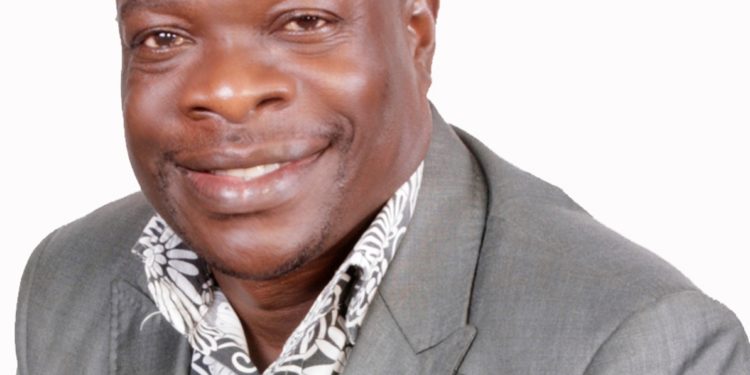Today 27th March 2021, Uganda joins the rest of the world to commemorate World Theatre Day (WTD) 2021. This day has been celebrated since 1962 by ITI Centres, ITI Cooperating Members, theatre professionals, theatre organizations, theatre universities, and theatre lovers all over the world. Various institutions mainly in the field of arts are expected to take stock of their activities in promoting the theatre, art form in the country as well as make people aware of the value of theatre and lay strategies for future actions.
UNCC and partners will commemorate the day through a symposium with Keynote speaker, Dr. Jessica Kaahwa President ITI-Uganda Chapter and panelist; Dr, Kagolobya Richard and Ameria Mbotto. We’ll stream live the event on our digital platforms (www.uncc.co.ug, tweeter/Instagram: UNCC16, FB/YouTube: ugandanationalculturalcentre) starting 10:00am. Please join us.
In Uganda, one cannot talk about World Theatre Day without talking about the National Theatre Uganda. It is administered by Uganda National Cultural Centre and was officially opened on 2nd December 1959, after an act of Parliament made it possible to establish the Uganda National Cultural Centre in 1959.
As we celebrate WTD 2021, I would like to share with you the National Theatre stage and what makes it a theatre stage like no other. It is our give back to the public as we begin the journey of demystifying the theatre stage. A stage serves as a space for actors and it’s a focal point for the audience. For purposes of this write-up, I will restrict myself to a proscenium arch stage which was constructed at the National Theatre.
I know a number of you out there have watched and enjoyed performances at the National Theatre stage but have never known what kind of stage it is where the action takes place. It is for this reason that I felt compelled to unveil the National Theatre stage on this World Theatre Day 2021
The wooden proscenium stage measures 16 meters wide with a depth of 10 meters and a height of 2 meters. It comprises the curtains, legs, borders, pulley system, a trap door, burial grounds, green room, and dressing rooms. Control room (Lights/sound), orchestra pit, operational/stage managers/director’s room.
LIGHTING is an essential part of theatre due to the fact it brings any given story to life. It doesn’t matter how great the script may be, how exceptional the act is, if the lighting is not good, it could easily ruin the otherwise would-be excellent performance. Lighting creates the aesthetics including but not limited to; effects, visibility, focus, composition, mood, and motivation for example highlighting key moments and directing the audience’s focus. The National Theatre- Uganda has the following lights; the National Theatre stage has Front of house lights, spotlights, a follow spot, footlights, cycloramas, boom lights, house lights, and working lights. I would like to highlight the fact that the National Theatre stage recently upgraded from analog to digital system however we did not completely phase out the analog system meaning that both systems work alongside each other.
Stage spots are 36 and suspended from above and in 3 sets each with 12 spots. They give a hard-edge effect used to light an actor or object on the stage. They are used to highlight a character on stage accompanied by colored filters. Besides highlighting a character, stage spots separate a character from the backdrop and characters around them to emphasize the emotion, action, or expression of the character.
Front of the House (F.O.H) totaling 24 at a distance of 30 meters from the stage placed at the back of the auditorium and above the audience. Each light is 2000wts and that explains the distance because of the heat each light emits. F.O.H lights the front of the stage/actor and the required effects as per the given performance.
House lights light up the auditorium, they are usually switched on before and after a performance to enable the audience to safely navigate the auditorium in terms of exit and entry. On some occasions, they are used when the audience is involved in a production for example when the actors interact with the audience. These are the usual bulbs with normal watts of say 20wts. They are 150 in total.
Working lights are normal lights on stage used by the stage crew when rigging, cleaning, or doing any other work while on stage in the process of preparing the stage for a show. Like house lights, these are fluorescent tubes.
Follow spot. National Theatre has one follow spot placed at the back near the control room. It is 2000wts and its purpose is mainly to follow a given character or light a specific object aimed at creating the desired effect. A follow spot works best when the rest of the stage is in the dark. It was purchased at UGX 12M. It is placed on a stand to enable the operator to pan or tilt it as per the given directives from the director.
Footlights are placed on the apron and they are 200wts. They are in strips of 3 rows and different colors. Their purpose is to illuminate the lower part of the character or create illusions like dwarfing a character on stage or ghost effects.
Cyclorama lights are placed at the back of the stage and are meant to create silhouettes. They are in a strip.
Boom lights are offstage with 1000wts. They give a wash from off-stage to evenly light the stage.
A smoke machine is a flexible machine on stage meant to emit effects of smoke/fog as per the given performance. National Theatre stage has one smoke machine.
National Theatre stage has an in built sound system which provides all desired sound effects for a given performance.
Drapes commonly known as CURTAINS in theatre are meant to conceal action/scenery not meant for the audience, punctuate acts, and create sightlines and a signal that a show is over or has not yet started . National Theatre stage has a safety curtain, house curtain, legs, borders, traverse, and cyclorama.
The House curtain is usually up when there is no action on stage and during stage preparation. It comes down before a performance worth the aim of concealing action and objects not meant for the audience. It weighs about 400kg
A safety curtain is a metallic sheet across the proscenium opening. It’s the first curtain before others and it is meant to protect the stage from the audience in case of fire and vice versa.
Traverse curtains divide the stage space into parts as per the given performance. They can be used to provide sceneries or backdrops they are 2pairs.
Tormentors are meant to provide initial sightlines. They are plywood painted black and placed on both sides of the stage. They are two in number.
Legs prevents audiences from seeing what is off stage especially giving sightlines
Borders are above the stage and are meant to conceal the audience from seeing the roof of the theatre. They are six in number.
Cyclorama/backdrops have been placed at the back of the stage upon which sceneries are created/placed.
STAGE OPENINGS: These are meant to create desired illusion/effects as per the given performance. The National theatre stage has a trapdoor, burial grounds, and an Orchestra pit.
The trapdoor is placed at the centre of the stage with entry to the basement. It is used to create ghostly acts or acts where characters come from below the stage or go below the stage for example ghosts.
Burial grounds are placed upstage across and meant for scenes for burying characters in the view of the audience so that the illusion of burial is real.
The orchestra pit is placed at the front of the stage at the apron below the stage. It is connected to the basement and is meant for musicians during opera shows. It accommodates over 20 people with instruments.
Flexible bars are placed above the stage right from the safety curtain to the back of the wall. They are controlled by a pulley system. They hold all the curtains, lights and other hangings commonly known as flies. We also have a drencher on stage which is meant to give effects of rain in a show and can as well be used for firefighting on stage in case of a fire out break.
There are also 4 dressing rooms, an operations room, a greenroom, and bath rooms. We also have a control room at the back of the auditorium in the center where lights and sound is controlled from.
Let me stop at that for now.
HAPPY WORLD THEATRE DAY 2021.
Robert Musiitwa is the Public Relations Officer of UNCC.
Do you have a story in your community or an opinion to share with us: Email us at editorial@watchdoguganda.com













